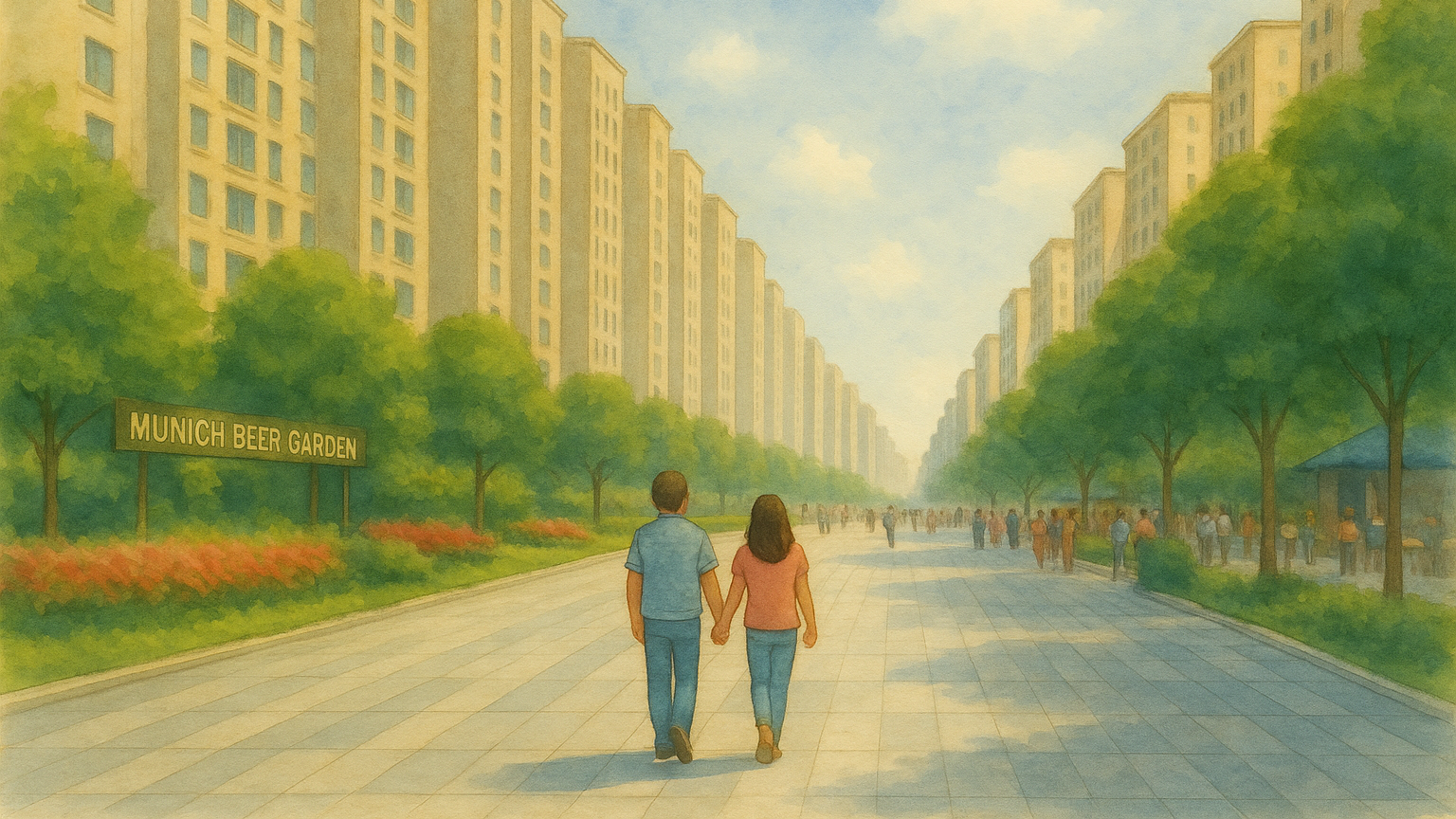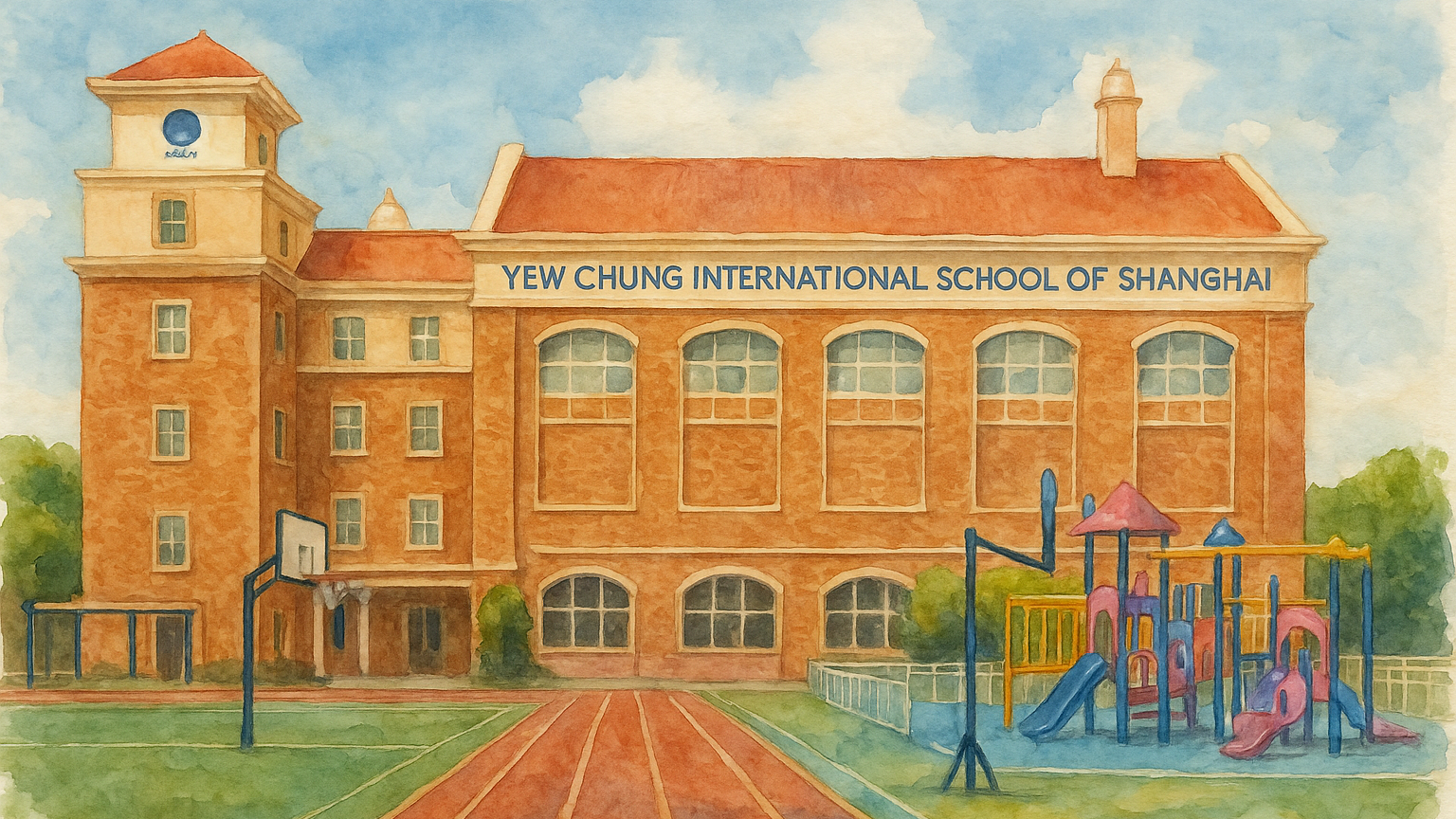Gubei: Shanghai’s Vibrant Asian Expat Hub and Gateway to Modern Convenience
Welcome to Gubei (古北), Shanghai’s original expatriate community and a unique neighborhood that stands apart from the suburban family orientation of Jinqiao or the urban sophistication of Xintiandi. Located in Changning District in western Shanghai, Gubei represents something distinctly different: a thriving international community that evolved organically rather than through master planning, shaped primarily by Asian expatriates, particularly Japanese, Korean, and Taiwanese residents, rather than Western expats.

Built in 1994 as Shanghai’s first intentional expatriate residential area, Gubei has matured into a sophisticated urban-suburban neighborhood that balances accessibility with community character. If you’re considering Gubei, you’re seeking affordable quality-of-life improvements over central Shanghai without the extreme expense of neighborhoods like Xintiandi, combined with authentic exposure to Japanese and Korean cultures and convenient access to Hongqiao’s transportation infrastructure.
The Neighborhood Character: Where Asia Meets Shanghai
Gubei occupies a fascinating middle ground in Shanghai’s urban hierarchy. Located approximately 8 minutes by metro from downtown People’s Square via Line 10, yet maintaining distinctly residential character with high-rise apartment blocks, smaller villa compounds, and tree-lined streets, Gubei creates something unusual for Shanghai: a neighborhood that feels genuinely livable as daily home rather than merely a convenient base for business pursuits.
The neighborhood’s most distinctive feature is its overwhelming Asian demographic composition. According to Shanghai’s 2020 census, Gubei now hosts the largest concentration of Japanese expats in Shanghai, complemented by substantial Korean and Taiwanese communities. This demographic reality fundamentally shapes neighborhood character and services. Walking Gubei’s streets, you’ll encounter Japanese conversations more frequently than English, Korean restaurants outnumber Western dining options, and Japanese supermarkets cater to expatriate tastes.
This stands in sharp contrast to other expatriate neighborhoods like Jinqiao (overwhelmingly Western-dominated) or Xintiandi (tourist-oriented luxury). Gubei feels genuinely Asian while remaining comfortable for international residents. The neighborhood has earned the unofficial designation “Little Tokyo” or “K-Town” reflecting the concentration of Japanese and Korean residents, dining, and cultural services.
The broader Hongqiao area, encompassing Gubei, stretches from Zhongshan Xi Lu (Inner Ring Road) to the east and the S20 Freeway (Outer Ring Road) to the west, bisected north to south by the Middle Ring Road. Gubei specifically comprises the densest residential section, while Hongmei Road to the west serves as the commercial heart with the “Laowai Jie” (Foreigner Street) collection of bars and restaurants.
Housing: Affordable Quality Living
Gubei’s housing market offers exceptional value compared to central Shanghai, attracting residents seeking comfortable living without premium downtown positioning costs. Accommodation clusters into distinct categories reflecting the neighborhood’s diverse population.

High-Rise Apartment Complexes dominate Gubei‘s residential landscape, with developments built throughout the past 30 years offering varied amenities and price points. Popular compounds include Gubei International Plaza (¥15,000 to ¥35,000 monthly for 2 to 4-bedroom units), Gubei International Garden (¥42,000 for 4-bedroom apartments around 220 square meters), Maison Des Artistes (¥28,500 to ¥42,000 for 2 to 4-bedroom units), Up Town (¥28,000 for 3-bedroom apartments), and Golden Bella Vie (¥26,000 to ¥40,000 for 3-bedroom units).
Typical pricing for Gubei apartments ranges from ¥20,000 to ¥26,000 for 1-bedroom units (60-100 square meters), ¥22,000 to ¥28,000 for 2-bedroom apartments (120-150 square meters), and ¥28,000 to ¥40,000 for 3-bedroom units (150-180 square meters). These prices represent 30 to 50 percent reductions compared to comparable Xintiandi or downtown Jing’an properties.
Serviced Apartments provide hotel-style management options for those preferring housekeeping and full-service amenities. Savills Residence Hongqiao offers 3-bedroom serviced apartments around 147 square meters at ¥35,000 monthly. Premium options like Gubei One Park command ¥200,000 monthly for massive 7-bedroom, 5-bathroom units spanning 616 square meters, appealing to executive families on generous expatriate packages.
Villa Compounds exist but represent much smaller portions of Gubei’s housing stock compared to suburban areas like Jinqiao or Hongqiao. Options like the exclusive Xijiao Garden Villa offer 4-bedroom properties (450 square meters) at ¥100,000 monthly, attracting residents preferring standalone homes.
Overall, Gubei rents run approximately 20 to 40 percent below comparable Pudong locations and 50 to 60 percent below central Puxi luxury neighborhoods, making it attractive to cost-conscious professionals and families willing to accept slightly longer commutes for housing affordability.
International Schools and Education
While Gubei lacks the concentration of internationally-recognized schools found in Jinqiao, several quality educational institutions serve the area’s international families.
Yew Chung International School Shanghai (YCIS Gubei Campus) represents the area’s primary international school option. Established in 2001, YCIS operates multiple Shanghai campuses serving students from age 2 through Year 13. The Gubei campus specifically serves secondary students (ages 11 to 18) following A-Level curriculum with tuition ranging from ¥152,800 to ¥328,500 annually depending on grade level. YCIS employs a unique co-cultural model with co-teaching and co-principal structure integrating Eastern and Western educational elements. The school holds International Baccalaureate World School accreditation, preparing students for top universities globally.

Yew Wah International Education School (YWIES Gubei Campus) offers specialized Art and Design secondary programming for students ages 14 to 18, featuring portfolio development and university guidance integrated with A-Level curriculum. This specialized focus appeals to artistically-oriented students seeking rigorous international education combined with creative development.
Shanghai United International School (SUIS) at 1000 Hongquan Lu near Seoul Plaza in Koreatown provides pre-K through grade 12 education following the International Baccalaureate curriculum. SUIS draws particularly strong Korean enrollment reflecting the neighborhood’s demographics.
Hongqiao International School and Shanghai French School in nearby Qingpu District remain accessible for families preferring alternative curricula. Many Gubei families utilize metro connectivity (approximately 15 to 25 minutes to these institutions) rather than limiting themselves to immediate neighborhood schools.
Daily Life: Authentic Asian Culture and Dining Excellence
Gubei’s greatest appeal lies in its exceptional dining and cultural offerings, particularly for those seeking authentic Japanese and Korean experiences beyond Xintiandi’s curated presentation.
Koreatown (Hongqiao Lu, Centred Around Seoul Plaza)
Approximately 60 percent of Shanghai’s Korean expat population lives within Gubei’s Koreatown district, creating authentic Korean neighborhoods rivaling Seoul’s quality.

Seoul Plaza (1000 Hongquan Lu) functions as Koreatown’s commercial heart, a four-story mall selling exclusively Korean products from cosmetics to snacks to clothing. Streets radiating outward from Seoul Plaza feature endless Korean restaurants, karaoke establishments, hair salons, and specialty shops. An entire alley behind Shanghai United International School concentrates Korean restaurants that become “packed and lively” nightly.
Authentic Korean dining options include:
- Qing He Gu Korean BBQ (legendary for galbi, expect long waits), requiring arrival during off-peak hours to secure seating
- Yi Xing Izakaya (requires in-person reservation reservations only), featuring premium sushi, yakitori, and authentic Japanese fare
- 1004 Mart Korean supermarket (multiple locations) providing Korean groceries from gochujang to noodles to frozen items
- New Star Jimjilbang Korean bathhouse and spa complex at the intersection of Hongquan Lu and Jinhui Nan Lu

The authentic Koreatown vibe, where Korean speakers outnumber English and Mandarin speakers, creates a unique Shanghai experience. Wangshou Ting, Han Ji Bo, and Lingshui Restaurant provide additional Korean dining options spanning from casual family establishments to upscale fine dining.
Japanese Culture and Dining District
Gubei’s Japanese community, though slightly smaller than the Korean population, maintains exceptional dining and cultural infrastructure. Takashimaya Department Store at 1438 Hongqiao Road anchors Japanese community services with seven floors featuring Japanese fashion brands, home goods, Daiso (99-yen-style concept store), food court with authentic ramen (recognized among Shanghai’s best), and yakiniku restaurants. The basement supermarket stocks imported Japanese groceries, though at premium prices reflecting import costs and Japanese clientele expectations.
Japanese dining throughout Gubei ranges from hole-in-the-wall ramen shops to sprawling yakiniku (Japanese BBQ) establishments to late-night izakayas offering premium sake and sashimi. Yi Xing, mentioned earlier, represents the quality tier of Japanese dining available. Gyudon beef rice bowls cost approximately ¥50, while sashimi and nigiri span ¥15 to ¥138 depending on fish variety and quality.
Japanese community services extend beyond dining to Japanese supermarkets, Japanese language schools, Japanese beauty salons, and Japanese schools serving families with children transitioning between Japan and Shanghai.
Shopping and General Dining
The massive Carrefour Gubei (268 South Shuicheng Road, near West Yan’an Road) holds the distinction of being the world’s busiest Carrefour by foot traffic, serving the entire Changning District. This French hypermarket stocks both international imports and Chinese products, though at premium pricing compared to local wet markets. The adjoining Food Republic food court offers a dozen quick-service restaurants at reasonable prices, making casual dining convenient.
However, honest assessments note Carrefour’s pricing frustrates many expats. Products often cost 20 to 50 percent more than specialty markets like E-Mart or competitive supermarkets. Produce quality sometimes proves inconsistent, with fresh items appearing aged at purchase. The overwhelming foot traffic (particularly on weekends) creates shopping challenges despite convenient location.
Alternative shopping options include specialist Japanese and Korean supermarkets catering to community needs, wet markets throughout the district offering fresh produce at local prices, and the developing retail options at adjacent Hongqiao CBD.
Transportation and Connectivity
Gubei’s location makes it substantially less convenient than downtown neighborhoods while remaining surprisingly accessible due to metro infrastructure and proximity to Hongqiao hub.
Metro Access provides primary connectivity via Line 10, which opened in 2006 as Shanghai’s first metro system serving the Gubei area. Hongqiao Road Station lies at Gubei’s eastern edge, while Yili Road Station serves the district’s western sections. From downtown People’s Square to Hongqiao Road Station takes approximately 8 to 10 minutes on Line 10, making commutes reasonably manageable. Line 2 serves nearby Zhongshan Park station north of Yan’an Road, offering alternative routing to downtown areas.
Operating hours span 5:28 AM to 12:02 AM (next day) with 4 to 10 minute frequencies during peak hours, providing good coverage for morning commutes and moderate evening returns.
Hongqiao Transportation Hub proximity represents Gubei’s greatest transportation advantage. Located just 15 to 20 minutes by metro from Gubei, the massive hub integrates Shanghai’s primary domestic airport (primarily domestic flights with selected international service), high-speed rail station (providing rapid access to Beijing, Hangzhou, and beyond), intercity bus station, and metro connections. The 15-minute proximity makes Gubei ideal for professionals traveling frequently within China via high-speed rail.
Driving and Local Transportation remains convenient despite density. The Middle Ring Road bisects Hongqiao east to west, providing connection to broader Shanghai expressway network. Taxis remain affordable for longer distances, though congestion on Yan’an Road and Hongqiao Road creates periodic delays during rush hours.
For international travelers, Shanghai Pudong International Airport sits approximately 35 to 40 kilometers away. While farther than from Jinqiao, metro access via Line 2 (approximately 70 to 90 minutes including transfers) remains viable though time-consuming.
Medical Care and Healthcare
Gubei offers specialized international healthcare options alongside Chinese public hospital access.
St. Michael Hospital at 388 Hongbaoshi Road (established 2007 and expanded 2009) serves as Gubei’s primary international healthcare provider. Operating as a member of the Asia Pacific Medical (APM) Group founded in 1992, St. Michael specializes in expatriate-oriented care with multilingual staff providing services in Chinese, English, Russian, Hindi, Japanese, Tagalog, Korean, Urdu, Polish, and more. Medical departments include chiropractic, dentistry, endoscopy, functional medicine, gynecology, general medicine, hair transplantation, health screening, cardiology, neurology, gastroenterology, oncology, orthopedics, pediatrics, physiotherapy, prenatal/postnatal rehabilitation, psychology, comprehensive radiology including 64-slice CT scanning and 3D cardiac echography, and traditional Chinese medicine.
The facility features 22 medical services with over 32 specialists across various fields, providing comprehensive care for expatriate families without requiring downtown travel. Direct insurance billing accommodates expatriate insurance plans.
Recreation, Parks, and Cultural Activities
While lacking Jinqiao’s extensive resort-style amenities, Gubei offers solid recreational options suitable for families and professionals.
Zhongshan Park (accessed via metro Line 2 to Zhongshan Park station) provides 90,000 square meters of green space featuring tree-lined paths, large lawns perfect for football or picnics, children’s amusement rides, boat rentals on small lakes, and seasonal flower displays. Weekend mornings reveal tai chi practitioners, elderly residents playing cards and mahjong, and families enjoying peaceful recreation. The park represents valuable green space in urban Shanghai, especially important for children requiring outdoor activities.
Shanghai Zoo (also accessed via Line 2) features animals from worldwide locations, with Giant Pandas representing the most popular attraction for families. While perhaps less engaging for thrill-seeking older children, the zoo provides suitable diversion for younger kids and a few hours of family outings.
Song Qingling Mausoleum (Song Qingling was wife of Dr. Sun Yat-sen, founder of the Republic of China) occupies a significant historical site within Gubei, honoring revolutionary-era history. An adjacent international cemetery serves the expat community.
Gubei Good Life Service Center (118 Fugui Road E, opposite Gubei Civic Center) opened in July 2024 as a new community hub featuring 680 square meters of space dedicated to community activities. Facilities include a shared classroom for community education and art courses, Ginkgo Coffee Bar with indoor and outdoor seating, fusion living room with reading areas and children’s play zones, elegant dance art space created collaboratively with the Shanghai International Dance Center Foundation, and multi-functional hall accommodating 80 people for community events. The center hosts social aesthetic education courses, creative sharing sessions, charitable workshops, and lectures.
Red Town Arts District in adjacent Changning features galleries organized around a sculpture park, including the Minsheng Art Museum with strong citywide reputation.
Practical Considerations: Cost, Community, and Lifestyle Tradeoffs
Cost of Living and Value Proposition
Gubei offers compelling value compared to other Shanghai expat neighborhoods. Housing costs run 30 to 50 percent below comparable central Puxi properties and 40 to 60 percent below luxury Xintiandi apartments. Dining expenses align with Shanghai averages for casual restaurants (¥30 to ¥100 per meal for local cuisine) with premium establishments ranging ¥150 to ¥400. Grocery costs vary dramatically depending on shopping choice: Carrefour premium pricing versus local wet markets offering authentic prices.
A single person can comfortably live in Gubei on ¥11,000 to ¥15,000 monthly including ¥25,000 rent, while families of four might budget ¥18,000 to ¥22,000 monthly excluding international school tuition.
Community Character and Social Life
Gubei maintains one of Shanghai’s most established expat communities, creating natural support networks and social infrastructure. Community organizations, school parent groups, and neighborhood meetups provide social connection opportunities. The Gubei Good Life Service Center strengthens community programming.
However, Gubei differs culturally from other expat neighborhoods. The overwhelming Asian demographic composition means Western expats represent minorities rather than majorities. English remains widely spoken but not universal on streets like Koreatown. This character appeals to those seeking authentic cross-cultural experiences but may feel isolating for Western expats accustomed to English-dominant environments.
Distance from Downtown and Entertainment
The 8 to 10 minute metro proximity to downtown represents excellent connectivity compared to Jinqiao (20+ minutes), yet still requires planned metro trips for evening entertainment. Gubei lacks the walkable nightlife and dining concentration of Xintiandi or the restaurant variety of Jing’an District.
However, Hongmei Road’s “Laowai Jie” (Foreigner Street) offers bar and restaurant collection with outdoor seating areas popular during pleasant weather seasons (spring and fall). Weekends and rush hours create significant traffic congestion along Hongmei Road and surrounding areas, despite relatively sleepy weekday atmosphere.
Safety and Security
Gubei maintains good safety records and secure residential compounds with 24-hour security. However, some residents expressed concerns following recent violent incidents (Suzhou knife attack mentioned in Reddit discussions) affecting confidence in neighborhood safety, though these events occurred outside Gubei proper. Overall safety remains comparable to other Shanghai areas.
Lifestyle Fit
Gubei works exceptionally well for:
- Cost-conscious professionals and families seeking quality housing at reasonable prices
- Asian expatriates (especially Japanese, Korean, Taiwanese) seeking culturally familiar community
- Those prioritizing authentic cultural experiences over Western expat bubbles
- Frequent domestic travelers benefiting from Hongqiao hub proximity
- Families seeking school options like YCIS or SUIS
Gubei works less well for:
- Western expats seeking English-dominant communities and Western social networks
- Families requiring top-tier international schools like those in Jinqiao
- Those prioritizing minimized commute distances to downtown work locations
Making Gubei Work for You
Gubei represents Shanghai’s most genuinely international neighborhood, not in the expatriate bubble sense of Jinqiao or Xintiandi, but in its authentic integration of multiple cultures prioritizing Asian communities. The neighborhood offers exceptional value for quality living, authentic cultural exposure, particularly for Japanese and Korean residents, and convenient access to China’s high-speed rail infrastructure via Hongqiao.
Visit Gubei during weekday and weekend hours, experiencing both the quieter residential atmosphere and weekend vibrancy. Explore Koreatown’s restaurants and Seoul Plaza, visit Takashimaya’s food court, walk Zhongshan Park, and talk to residents about community integration and schools. Honestly assess whether the Asian demographic composition aligns with your social preferences and whether Koreatown’s authentic character appeals more than Jinqiao’s planned infrastructure or Xintiandi’s luxury positioning.
If Gubei’s combination of affordability, Asian cultural authenticity, community stability, and Hongqiao connectivity resonates with your Shanghai vision, you’ll discover a neighborhood that has satisfied international families for three decades. You will have chosen a genuinely livable Shanghai neighborhood, not a expatriate stage set, but rather a genuine community where Japanese, Korean, Taiwanese, and Western residents build authentic lives within Asian cultural context. Welcome home.

Join The Discussion